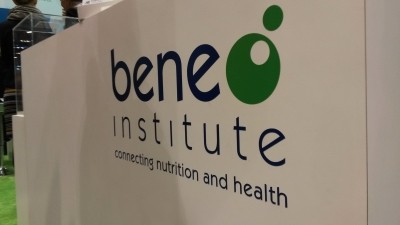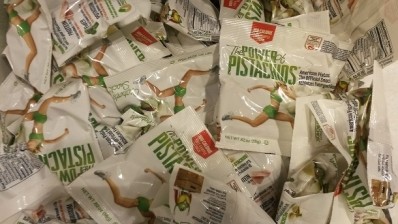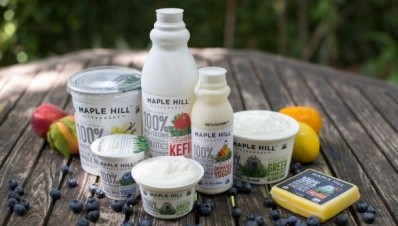Dairy farmers use technology in effort to cut greenhouse gas production by 25% by 2020
NDC President Jean Ragalie-Carr explained at the Food & Nutrition Conference & Expo that a lot can and is being done to reduce the environmental impact of dairy production – but in order to maximize sustainability efforts, the industry first needed to know where it was starting and where the most progress could be made.
To do this, Ragalie-Carr said, the NDC and the dairy industry undertook a complicated life cycle analysis that looked at how milk gets from the farm to the table and the greenhouse gasses it produces along the way.
“We found [in the US] that dairy contributed 2% -- only 2% -- of the greenhouse gas, and agriculture in general, through the EPA, provides about 10%,” Ragalie-Carr said.
While this is only a small portion of the overall emissions created by agriculture, Ragalie-Carr said 2% was too high for most of the dairy farmers – many of whom have lived off the land for generations and want to pass on their farms to their children in better condition than when they received them.
“So, they made a commitment, understanding what that 2% was, that they wanted to decrease greenhouse gas by 25% by the year 2020,” she said.
To do this, many farmers use technology to advance management practices identified by the life cycle analysis and reduce their farms’ carbon footprint. For example, the analysis found the bulk of emissions are created from feed production and on on-farm emissions, which can be reduced by lower electric usage in plants through the use of solar and wind power, or by blocking heat from the sun with screens to reduce reliance on other cooling mechanisms, she said.
Another way to reduce emissions is by cutting enteric methane through the use of methane digestors that capture manure and sequence out the methane so that it doesn’t go into the air, Ragalie-Carr said. This is converted into energy used to run the farm, she added.
Some farmers also are reducing the impact of dairy production on the environment by proactively ensuring the health of their cows by using pedometers to track how much they move and how much they chew their cud – a sign of how “happy” cows are, Ragalie-Carr said.
“Dairy farmers really are the original environmentalists,” she said. “They recycle their water up to five times … they capture the manure to get the methane, they use recycled tires. I mean, you just go around the farm and it is like a recycling station. It is amazing!”
Consider the role of nutrition in the equation
The nutrient density of dairy also should be considered when weighing the pros and cons of the industry’s environmental impact, Ragalie-Carr said.
“First off, all food has an environmental impact, and obviously we have to have food not only to survive but also to thrive, so it is important that you take [that] into consideration,” when weighing the cost and benefits of dairy and food production, she said.
According to the life cycle analysis, dairy foods provide many nutrients that are hard for consumers to fill by other means, such as calcium, potassium, vitamin D and protein. The impact of these nutrients when delivered in three to four daily servings over five years could reduce the risk of hypertension by 40%, saving $70 billion in healthcare costs, cut the risk of type 2 diabetes by 25%, saving $37.5 billion in healthcare costs and reduce the risk of coronary heart disease by 10% or $16.5 billion in savings, according to the life cycle analysis.
Manufacturers must help
While the farmers are doing their part to reduce emissions and the environmental impact of dairy production, and provide nutrient dense foods and beverages, Ragalie-Carr called on branded manufacturers to lend a hand by sharing this news with consumers.
For example, she said, manufacturers are better suited to tell consumers about the nutritional value of dairy, as well as share the stories of how producers are cutting back energy consumption, she said.
Reflecting on the issue as a whole, she concluded: “It is a complex subject of what it means to be sustainable, and you have to think about the economic impact, the environmental impact and the social impact.”

















